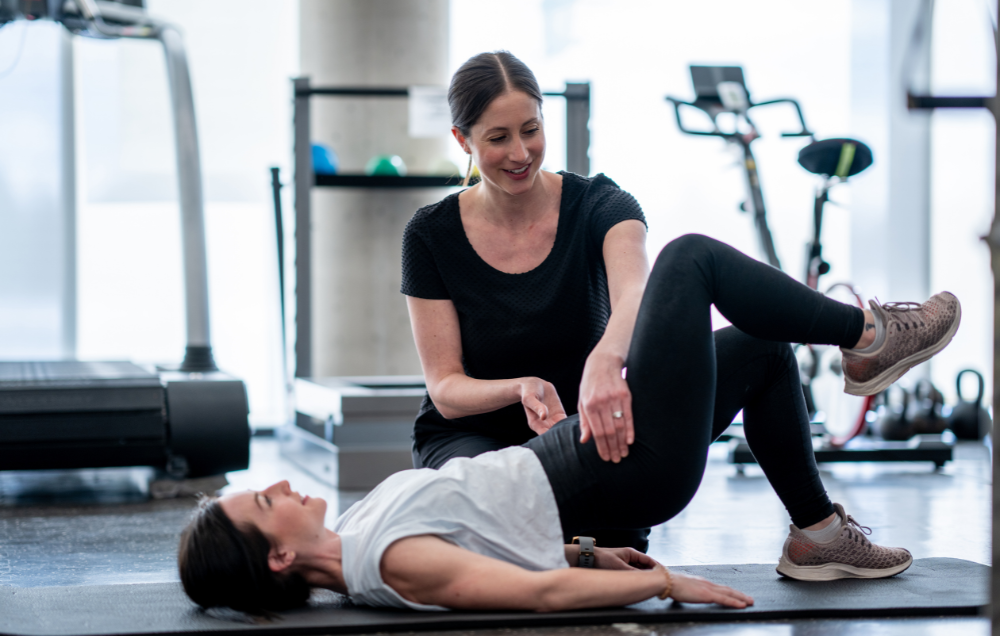Contents
Pelvic floor physical therapy can play a vital role in treating a range of conditions, including endometriosis. Endometriosis occurs when uterine tissue grows outside of the uterus. This tissue can develop around other organs in the pelvic cavity, such as the ovaries and fallopian tubes. Endometriosis can lead to persistent pelvic pain, fatigue, bloating and many other symptoms. While these symptoms are sometimes persistent, they can also come in waves. Endometriosis often flares up with periods. You may start to experience heavier and more painful menstruation when you have endometriosis. If you’re experiencing this condition, seeking treatment can be vital.
Endometriosis is fairly common. If you experience persistent pain around your pelvis, endometriosis is among the most likely culprits. Research shows that endometriosis affects up to 70% of women with chronic pelvic pain. Though there is currently no known cure for endometriosis, its symptoms can be managed. With the right treatments, you can alleviate your pain and manage other symptoms. Potential treatment methods include medication and surgery. One of the most effective treatment approaches for endometriosis is pelvic floor physical therapy. The many benefits of physical therapy, including its noninvasive nature, make it a popular option for treating endometriosis.
3 benefits of pelvic floor physical therapy for endometriosis
- Pain relief — Endometriosis can lead to chronic pain in many areas. In addition to causing pelvic pain, it can also lead to referred pain in the abdomen, lower back and other nearby regions. If you’re experiencing persistent pain due to your condition, physical therapy can help. Pelvic floor physical therapy typically involves targeted exercises. These exercises can help you gain more control over your pelvic floor muscles and enable you to relax tight muscles to release painful tension. While this may not address all of your pain, it can provide significant relief. Endometriosis pain is typically multifaceted. The condition can cause pain directly and indirectly. The tissue growths can press against other tissue, directly leading to aches and pains. They can also put strain on surrounding muscles, leading to stiffness and irritation from overuse. By strengthening your pelvic floor muscles with physical therapy, you can minimize irritation and discomfort.
- Improved bladder function — Urinary incontinence is a common symptom of endometriosis. If you’re having trouble maintaining control over your bladder, physical therapy can help. By restoring pelvic floor function, physical therapy can help you improve control over your bladder and bowels.
- Reduced swelling — The irritation caused by endometriosis can cause swelling in nearby tissue. Physical therapy can help manage this swelling. Addressing excess swelling can be key to improving flexibility and managing pain.
Top physical therapy exercises for endometriosis
Exercises are a fundamental part of physical therapy. Your physical therapist may recommend targeted exercises intended to minimize your endometriosis symptoms. All of your body’s systems are deeply interconnected. Because of this, even exercises that don’t directly engage your pelvic floor can still help address your condition. Some of the best exercises for treating pelvic issues involve strengthening your core. Your core muscles are the muscles around your trunk and hips that help support your spine. These muscles also help support and stabilize your pelvis.
In addition to core-focused exercises, you may also benefit from exercises that engage your lower back and upper legs. Your physical therapist can help determine how many repetitions of each exercise are right for you. Some top physical therapy exercises for managing endometriosis include:
- Cat-cow stretch — Experiencing lower back pain due to your condition? The cat-cow stretch may help relieve your pain and increase your flexibility. To do this exercise, start with your hands and knees on the floor. From a squared starting position, gradually lower your back until it’s rounded. You may feel a stretch along your spine. Hold this rounded position, also called the cow position, for a few seconds. Then, pull your abdomen in and arch your back upward. Hold this position for a few seconds. This is called the cat position. From here, you can return to the starting position. You can also incorporate breathing exercises into this stretch. To do so, inhale when entering the cow position and exhale with the cat position. This may help enhance the relaxing effects of the exercise.
- Pelvic tilts — Do you want to stretch tight muscles in your pelvis and lower back? Pelvic tilts can help. This gentle movement can help mobilize the pelvic area, gradually improving flexibility and reducing pain. To do pelvic tilts, start by lying on your back. Bend your pelvis slightly upward and toward your upper body. At the same time, press your back against the floor. Tightening your abdominal muscles can help. You can visualize this exercise by imagining your belly button trying to make contact with your spine. Hold for around 10 seconds then release.
- Hip flexor stretch — The hip flexors are muscles located in your upper thighs that help stabilize the hip and facilitate hip mobility. The hip flexors include the sartorius muscle, which is the longest muscle in the body. Stretching these muscles can relieve tension around your hips and pelvis. One of the best ways to stretch your hip flexors is with a dynamic exercise. To do a dynamic hip flexor stretch, stand and take a big step forward with your left foot. This motion should feel similar to a lunge. Once your left foot is planted, gradually bend your right knee and lower it toward the floor. As your upper body moves forward, make sure to maintain a straightened posture. Push your pelvis forward. As you do, you may feel a stretch in your thighs. Hold this lunge position, with your right knee not quite touching the floor, for several seconds. Then return to the starting position. You can repeat this exercise on the other side for optimal results.
Top pelvic floor physical therapy exercises for endometriosis
When it comes to PT exercises for endometriosis, exercises that directly engage the pelvic floor can be especially effective. Pelvic floor exercises can relieve pain, improve coordination and reduce the overall severity of your symptoms. Your physical therapist can help incorporate these exercises into your treatment plan. Effective pelvic floor physical therapy exercises include:
- Kegel exercises — To do Kegel exercises, sit or lie down in a resting position and focus on your pelvic floor muscles. Try to tighten these muscles. You should feel the muscles move slightly when tightened. Hold for around five seconds; then release. After relaxing for another five seconds, tighten the muscles again. This cycle of contracting and releasing can help build strength and control. Kegel exercises can help reduce pain, improve bladder function, relieve swelling and more. While Kegel exercises can be highly beneficial, doing too many may lead to muscle strain. Your physical therapist can help you find a good balance.
- Reverse Kegels — Similar to Kegel exercises, your physical therapist may also recommend reverse Kegels. The goal of reverse Kegels, instead of tightening your muscles, is to relax them. This exercise can be helpful if you’re experiencing persistent muscle tension around your pelvis.
- Bridges — Bridges can be great for strengthening muscles in your core and pelvis. To do bridges, start by lying on your back with your knees bent and feet planted. Then push your hips upward so that your body forms a bridge from your shoulders to your knees. Hold the bridge for a few seconds before releasing. Doing bridges frequently can help gradually build pelvic floor strength.
Experience effective pelvic floor rehabilitation at Lattimore Physical Therapy
Are you ready to improve your pelvic health? Lattimore Physical Therapy can help. Our team is committed to delivering expert, compassionate treatment and supporting you each step of the way on your journey.
Contact our team today for more information about pelvic floor PT or to schedule an initial appointment.



